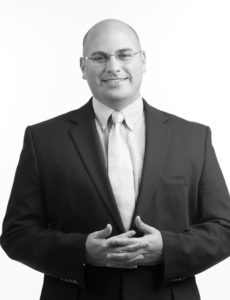 There are a number of changes taking place in the insurance market as it relates to the construction industry. Many contractors are feeling the pressure of stricter underwriting guidelines and the effects of standard carriers either reducing capacity or exiting the construction business altogether.
There are a number of changes taking place in the insurance market as it relates to the construction industry. Many contractors are feeling the pressure of stricter underwriting guidelines and the effects of standard carriers either reducing capacity or exiting the construction business altogether.
According to Katie Davies, president and CEO of Technical Risk Underwriters (TRU), the number of building permits issued in 2018 and 2019 is trending toward a five-year high. This growth in the construction sector has given underwriters the capability to pick and choose the accounts they elect to write, leaving businesses with riskier profiles less flexibility when it comes to obtaining coverage. As the transition begins from a soft to hard market, underwriters are seeking to move away from writing construction business at a loss and focus on more profitable opportunities.
Workers Compensation
Similarly, the changing workforce continues to cause its own concerns. With a skilled labor shortage, an aging workforce, and an increase in temporary labor, general and professional liability rates are increasing. Many firms are experiencing difficulty filling their hourly positions, leaving them no choice but to hire inexperienced workers, inevitably leading to more workers comp claims and auto claims. As a result, many general liability carriers are pulling out of the market because of the influx of these types of claims. With the numbers of carriers diminishing in this space, rates are increasing.
Even though many companies are implementing more cost-savings technologies and diversifying operations, carriers are simply seeing this as a broadening risk profile.
Builder’s Risk
Some areas of the industry are seeing some volatility concerning builder’s risk. For example, risk concerning wood frame construction has jumped, forcing many builders to evaluate whether the cost savings of using wood is worth the growing soft cost in the insurance space. Wildfires and arson are among the leading threats to this type of framing, forcing builders to seek alternative materials that increase production cost. While the London market has provided some respite for wood frame builders during this time, their thoughts and appetites are already shifting towards tighter underwriting requirements. Wood frame in particular is seeing a reverse economy of scale, as rates are increasing and capacity shrinking for the projects that are over $10m in hard cost values.
Commercial Auto Insurance
Finally, commercial auto continues to be the most difficult line of insurance today. Deteriorating underwriting results continue to put significant upward pressure on auto rates and umbrella pricing, with those who have historically adverse auto loss experience likely to receive significant rate increases. To combat this rate environment, some larger companies are turning to alternative risk financing and placing large amounts of their auto exposure into captives. Also, few carriers are willing to write monoline auto liability policies which adds another challenge of a limited marketplace. Captives are becoming an increasingly interesting solution as companies look to get ahead of the market shift and try to stabilize their insurance expense.
At RogersGray we have access to an exclusive Captive that has proved to be a beneficial alternative for many of our clients. To learn more about how a Captive could help your business during the hardening market, please reach out at GDeems@RogersGray.com, on LinkedIn or via phone 413-374-3194.
Greg Deems | CRIS
Senior Vice President | Business Insurance
 Greg Deems is a Vice President, Consultant in the Business Insurance at RogersGray. He specializes in insurance programs for complicated construction risks and property. Greg previously served as the Chairman of the Board of Directors for both the South Shore Young Professionals and the Plymouth Area Coalition for the Homeless, and remains highly involved with both organizations. Greg also volunteers for several committees at the Friendship Home in Norwell. You can connect with Greg on LinkedIn or by email.
Greg Deems is a Vice President, Consultant in the Business Insurance at RogersGray. He specializes in insurance programs for complicated construction risks and property. Greg previously served as the Chairman of the Board of Directors for both the South Shore Young Professionals and the Plymouth Area Coalition for the Homeless, and remains highly involved with both organizations. Greg also volunteers for several committees at the Friendship Home in Norwell. You can connect with Greg on LinkedIn or by email.
